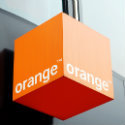
Juniper tops a list of potential new SD-WAN partners for Orange Business Services as the French operator looks to expand beyond an existing relationship with Cisco Viptela, Light Reading has learned.
Pierre-Louis Biaggi, the vice president of connectivity for Orange Business Services OBS, called out Juniper Networks Inc. (NYSE: JNPR) when highlighting plans to extend the service provider's SD-WAN offering in the first quarter of the current fiscal year. "We are looking at Juniper," he recently told Light Reading. "Frankly, what I want is to expand my portfolio beyond Cisco Viptela in the first quarter, but I have not yet chosen."
OBS, the enterprise division of French telco Orange, has previously identified both Cisco Viptela, a subsidiary of equipment giant Cisco Systems Inc. (Nasdaq: CSCO), and Riverbed Technology Inc. (Nasdaq: RVBD) as SD-WAN vendors, but its current deployment is based heavily on the former's technology, Biaggi revealed. (See Orange Adds Cisco to SD-WAN Offering in Automation Push and Orange Adds SD-WAN to Hybrid Net Strategy.)
"Our customers are usually large multinationals and they consider that Viptela has a robust solution for complex requirements," he said.
The introduction of new vendors would help OBS to address different types of customer, said Biaggi, when asked to explain the latest move. "We want to address smaller customers with less stringent requirements and there we may look at other types of solution that are easier to deploy and use," he said.
SD-WAN technology has taken off in the last few years, allowing organizations to switch dynamically between Internet and MPLS connectivity for cost and service benefits.
Thanks to an explosion of Internet traffic, and continued growth in MPLS usage, OBS is still witnessing a "single digit" percentage increase in connectivity revenues, according to Biaggi, despite falling prices.
But his remarks show the operator is now turning its attention to the needs of smaller companies as SD-WAN grows in popularity as a connectivity option among all types of enterprise users.
That change in marketing focus has led to a reappraisal of the SD-WAN strategy, which was previously based around close collaboration with just Cisco Viptela and Riverbed.
Despite efforts to find new SD-WAN partners, Biaggi also revealed that customer interest is shifting from SD-WAN functionality to the service "wrap" around an SD-WAN offering. As a result, many are starting to ask questions about managed services, links between overlay and underlay networks, security features and the cloud.
Although some OBS customers are requesting what Biaggi calls "fully over-the-top" SD-WAN services, most of the operator's larger clients have recognized the need for links between the overlay and underlay networks, he says.
"Linking the underlay and the overlay is very important to ensure that existing services are functional," he explains. "If you just build an overlay then you will lose your SIP trunking services, which are underlay, and so you need a gateway for that link."
For more NFV-related coverage and insights, check out our dedicated NFV content channel here on Light Reading.
OBS now has 20 international points of presence (PoPs) where it has deployed gateways that support these links between the overlay and underlay networks.
At the PoP level, the operator is using only virtualized gateways on standard servers, while at the edge and site level it is still using dedicated equipment.
But that is slowly changing as virtualization, or cloudification, creeps into other parts of the telco network. "We have the option to deploy VNFs [virtual network functions] and have selected some universal CPE [customer premises equipment] vendors," says Biaggi. "The trend is to go to virtualization, of course, and that is starting to be the trend at the edge."
Biaggi would not disclose the details of the CPE vendors OBS has selected, saying the details have yet to be made public.
OBS kicked off universal CPE trials back in early 2017 as part of its broader investment in on-demand services based on software-defined networking (SDN) and network functions virtualization (NFV). It has aired the ambition of substituting a universal CPE for all the roughly 400,000 CPEs it maintains at customer sites worldwide. (See Orange Kicks Off 'Universal CPE' Trials.)
"The goal is to provide complementary services but not replace what we are doing in the network," said Stephane Litkowski, a network architect with OBS, back in 2017. "We know that doing WAN [wide area network] optimization in the network does not make sense and that it needs to be at the customer site."
— Iain Morris, International Editor, Light Reading
Read more about:
EuropeAbout the Author(s)
You May Also Like











